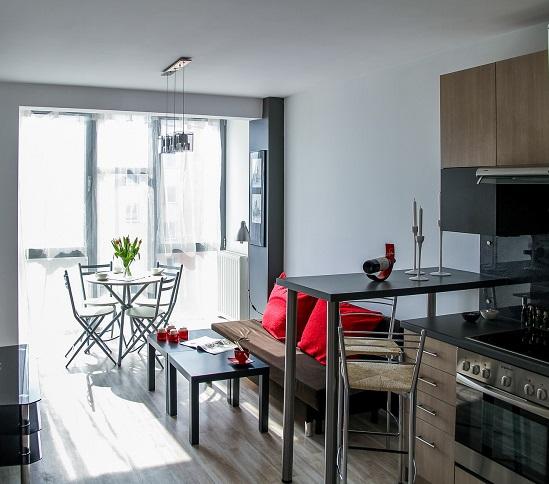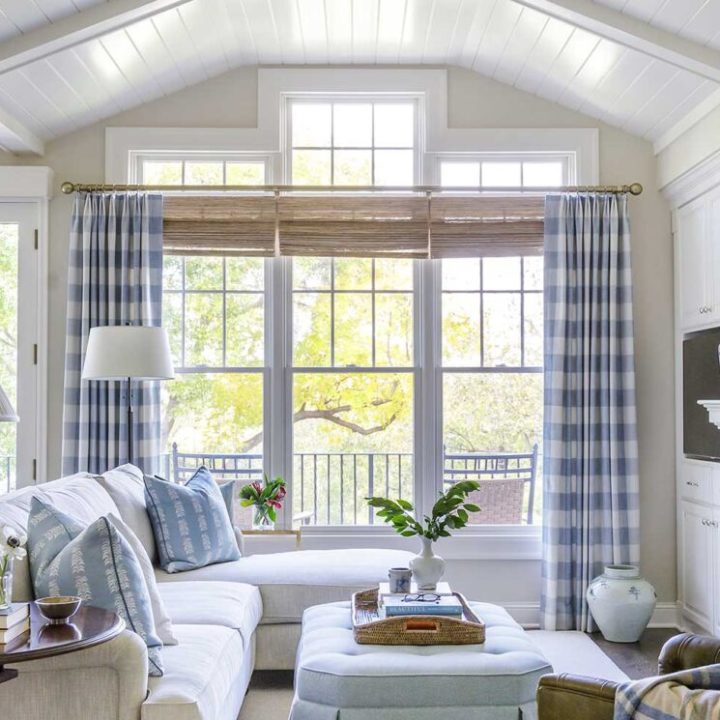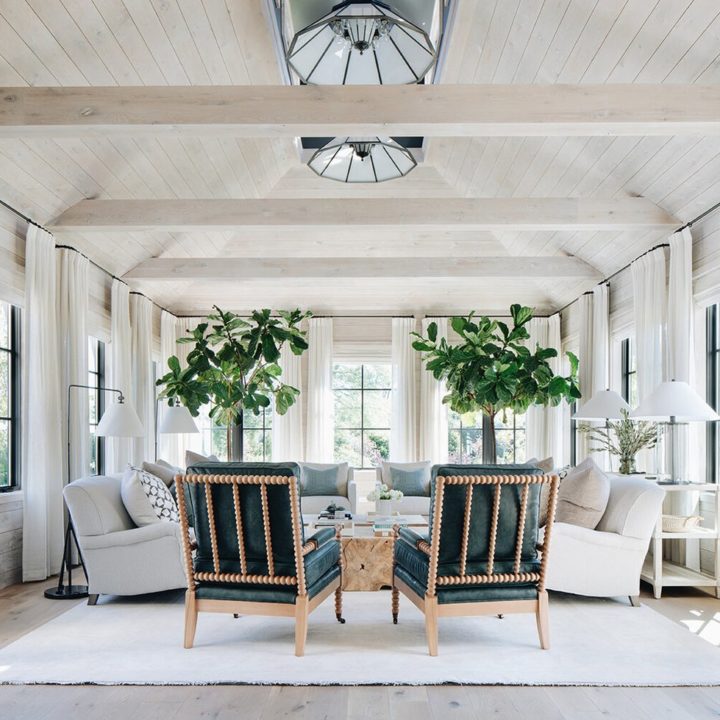Spiffy Speak
How Long Should My Curtains Be?
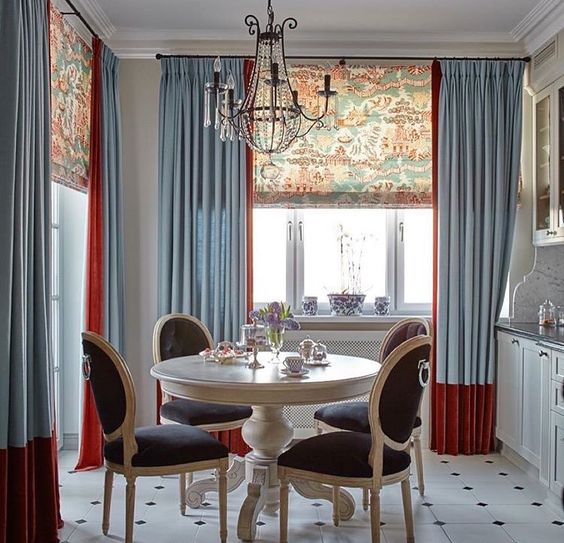
When designing curtains, one of the key decisions you will make is regarding the curtain length. The decision highly hinges on the look you’re trying to create, the level of formality you want to achieve, and the type of window you’re covering. Whether it’s for your guest-friendly living room or a casual kitchen, getting the length right begins with knowing what’s the right length. How long should my curtains be? – that’s what we are going to answer here today.
Order custom curtains from Spiffy Spools and dress your windows and doors with perfection. With over 3000 fabrics and customization options that let you choose the exact curtain length and width, you’re sure to create a designer window treatment for your space!
Sill-Length Curtains
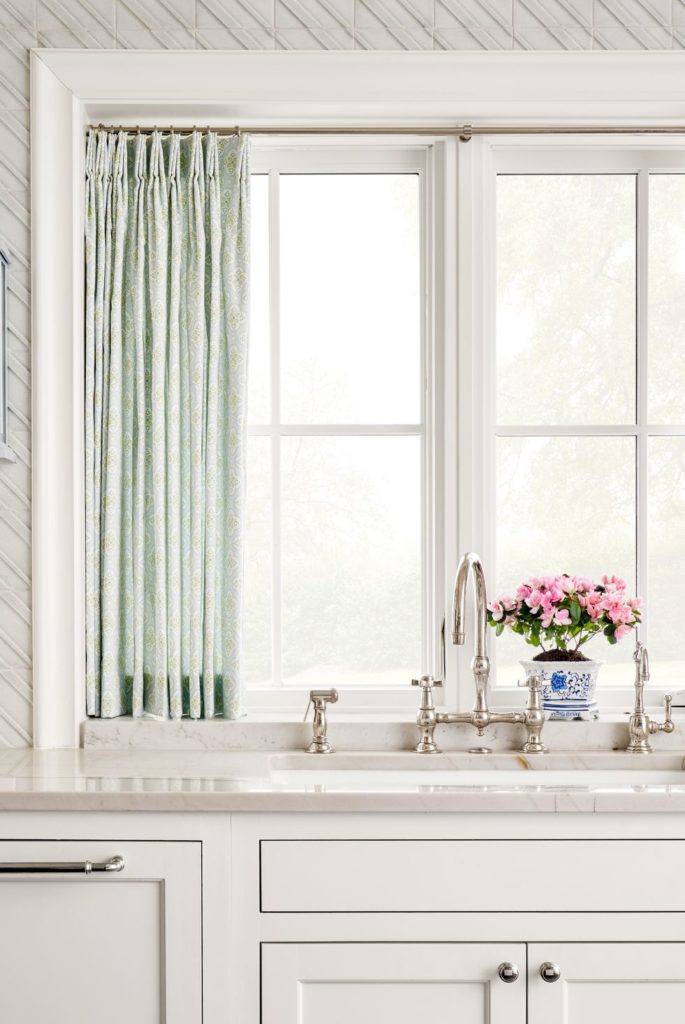
These are curtains that stop exactly at the sill. They are oftentimes mounted within the window recess so the curtains brush the sill lightly.
When you have to resort to short curtains and your windows are deep enough for curtains to be mounted inside the recess, sill-length curtains are the perfect choice. This length is especially recommended for nursery curtains, kitchen curtains and bathroom curtains.
Sill-length curtains are great options for small windows with radiators or inbuilt seating underneath. Being lightweight and off the floor also makes it easy to keep them clean.
Apron Curtains
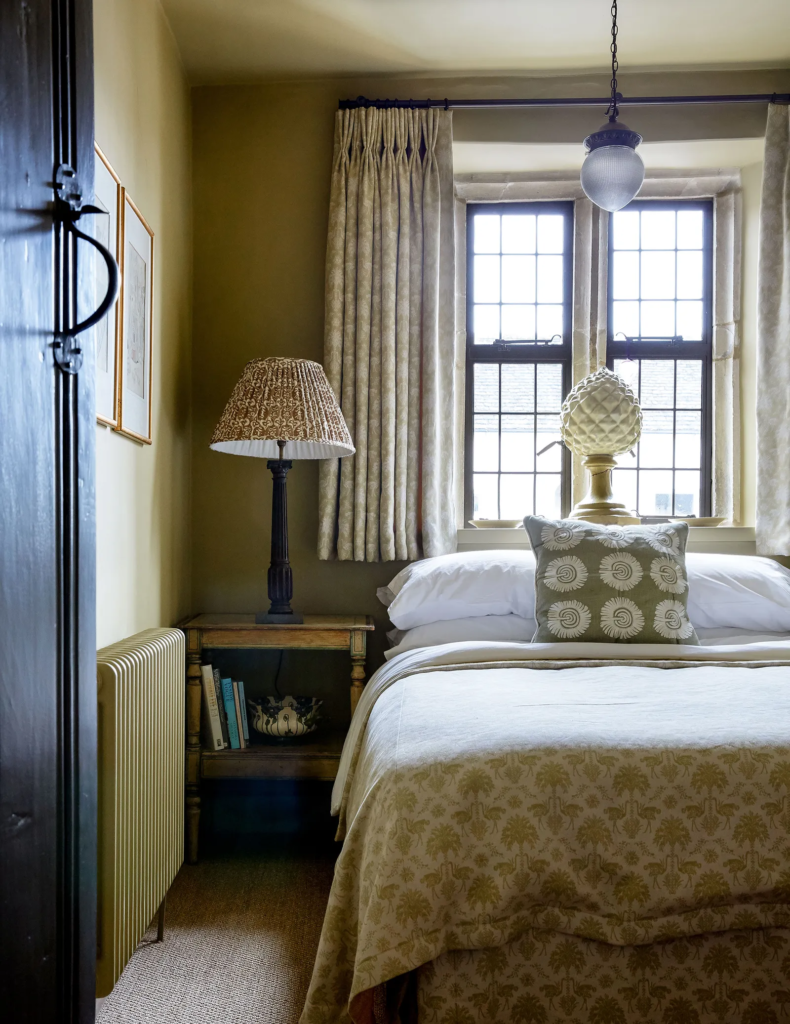
Apron curtains run past the sill by six inches or less, and ideally never more. That slight overlapping helps to keep the curtains from billowing roughly and also reduces light leakage from the bottom.
Apron curtains are great solutions for small windows and small spaces, especially when the wall beneath the window is not free. For instance, if you need curtains for your small bedroom windows where the bed is placed against the wall with the windows, which can often be the case with spare guest bedrooms, apron curtains would be your perfect fit. They are easy to maintain as they do not meet the floor and offer a very casual homely feel to the space.
For all situations where sill-length curtains are ideal but the window recess is not deep for inside mounting, or if you need better coverage for privacy and light control, think of apron-length curtains.
Floating Curtains
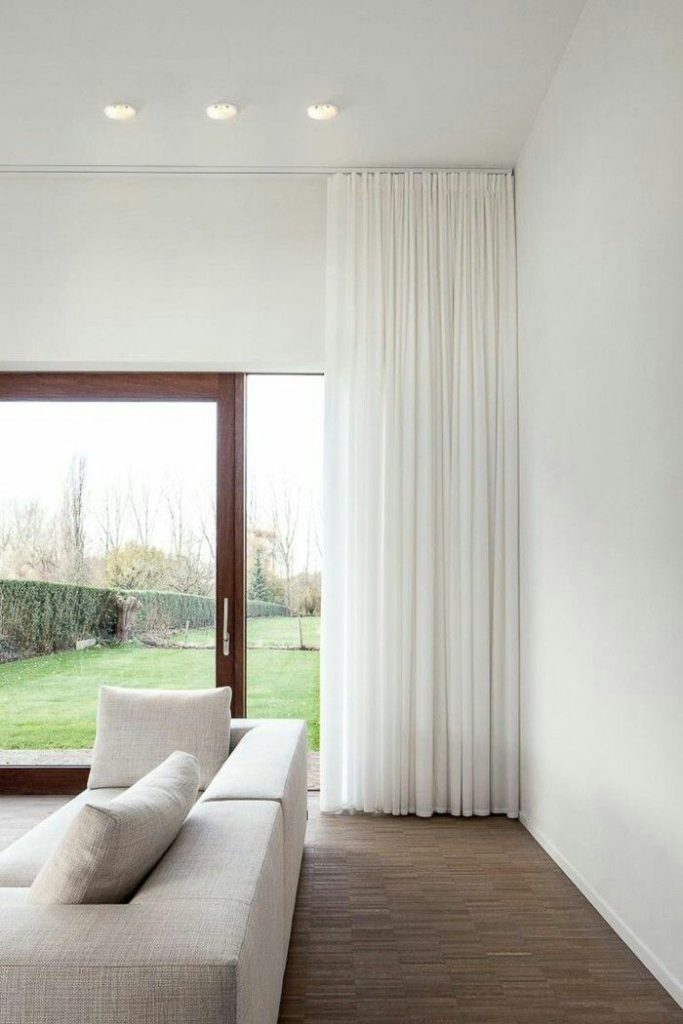
‘Floating’ curtains stop at about half to an inch off the floor. Note that the gap should never exceed an inch as that comes across as a design mistake or fabric shrinkage. Since the curtains make no contact with the floor, it appears as though they are ‘floating’, hence the name.
The gap below the curtains allows airflow that prevents it from gathering floor dust, pet hair and mold. Since they don’t drag on the floor, it is easy to maintain the elegance of the pleats as they fall straight down without any hindrance to their flow, needing no manual dressing for the pleats. Besides, the length also guarantees drapery’s longevity and enhances its functionality. So, they are best for high-traffic areas and frequently operated windows.
In summary, when you need the elegance of long curtains with minimum maintenance and cannot compromise functional ease and longevity, floating curtains are the smart choice.
Grazing Curtains
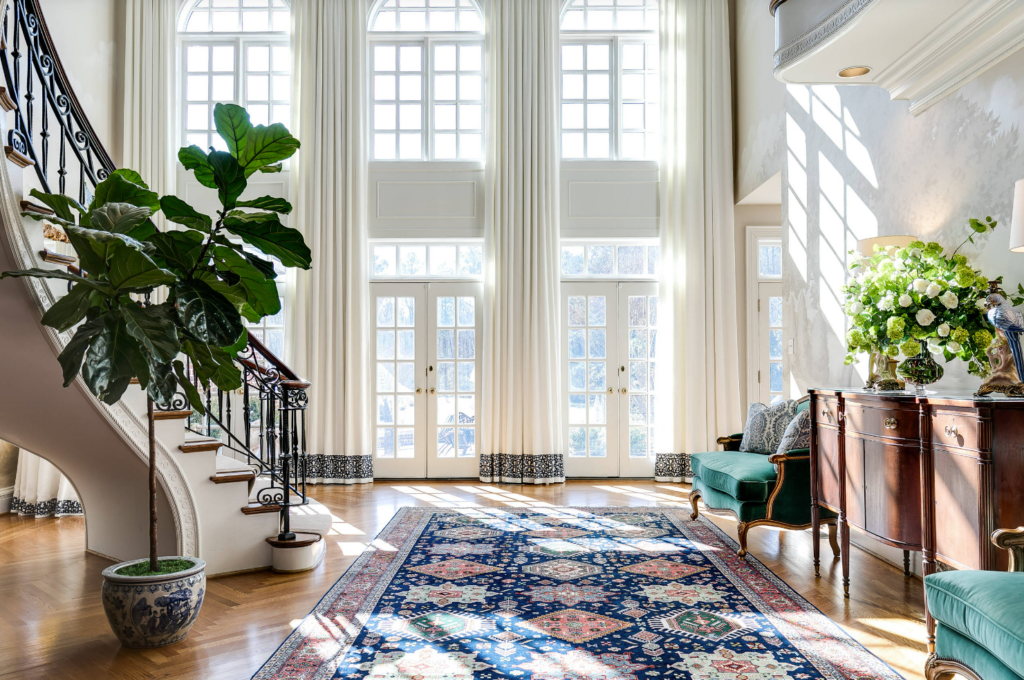
Also known as the ‘kiss’ position of floor-length curtains, ‘grazing’ curtains lightly touch the floor. You achieve this look by taking exact ceiling-to-floor measurements. This look is hard to pull without flawless measuring skills and even floors. At this length, curtains impart the most tailored look as they stand in a perfect-fit position and look very elegant without being too formal. Also, light leaks from the bottom are minimized because of the seamless contact between the drapes and the floor.
However, you need to be very careful with the fabric selection. Make sure the fabric does not have the tendency to stretch or shrink in relation to climatic situations, so you can maintain the ‘grazing’ look over changing seasons and years.
For zero light leaks from below the curtains, consider ‘graze’ over ‘float’. Also, if you want to be formal but not go overboard with the vibe, consider ‘graze’ over ‘puddle’.
READ MORE: FLOOR TO CEILING CURTAINS: A COMPLETE GUIDE
Break Length Curtains
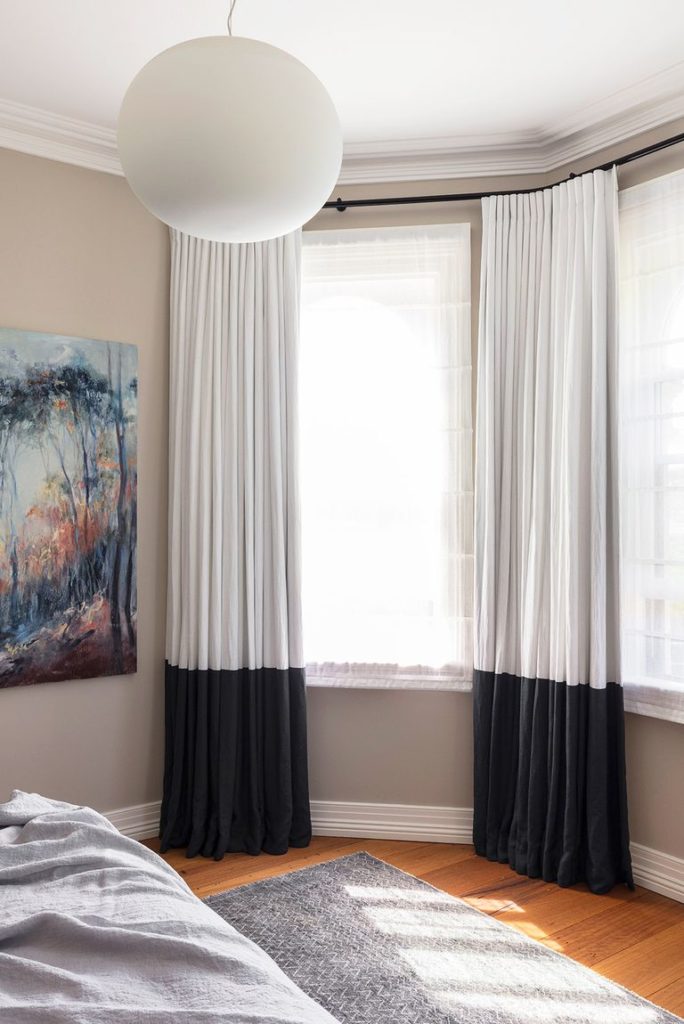
Also known as ‘break-puddle’ and ‘trouser length’, this style of curtains is an intermediary between ‘graze’ and a true ‘puddle’. In this look, curtains touch the floor and then extend by an inch. The modicum excess cancels light leaks from the bottom as in the case of ‘float’ length and the pressure of achieving the designer-perfect seamless contact of ‘graze’ length.
So when you want the curtains to barely touch the ground but may fail to make seamless contact across the width due to uneven floors or stretchable/shrinkable drapery fabrics, consider break-puddle as the best solution.
Puddle
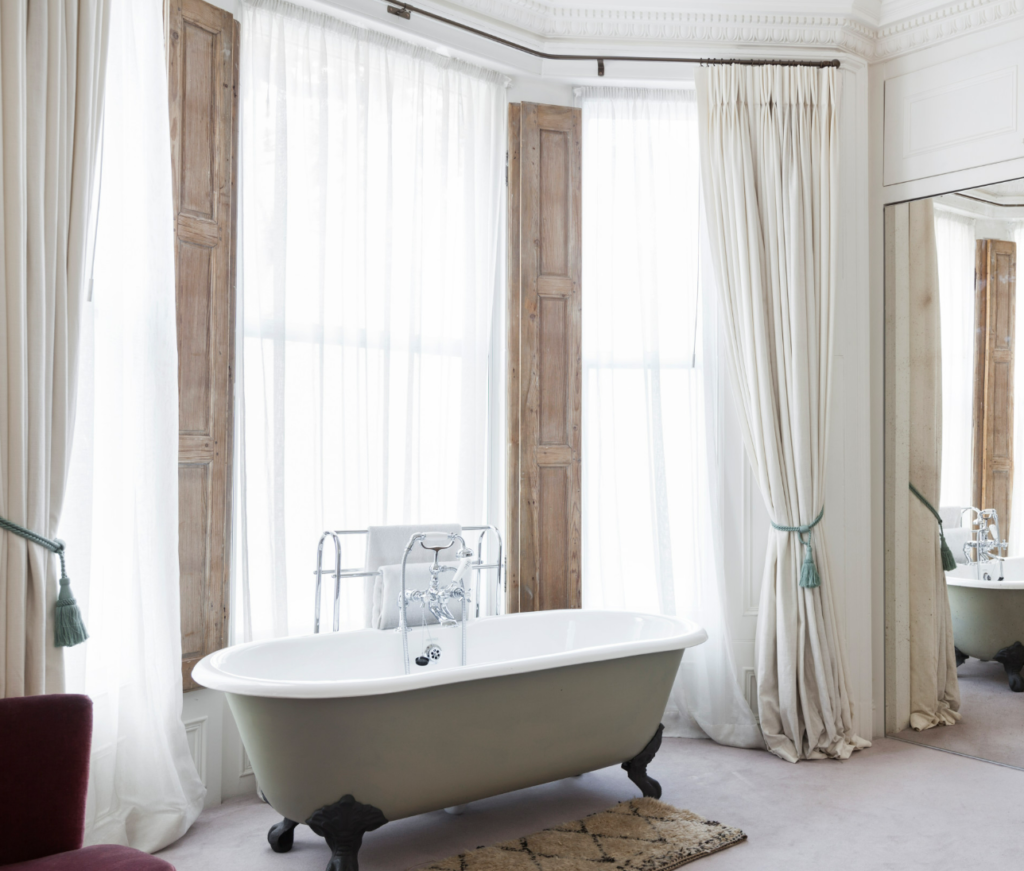
Curtains that extend 2 to 18 inches on the floor after touching it fall in this category. As the name suggests, this length allows the fabric to ‘pool’ on the floor. The pleats formed thus are amazingly opulent and stylish. Suited especially for velvets and silk drapes, this is the dream look for a dressed-up formal room because of its highly dramatic appeal.
Based on the extent of the excess, puddled drapes are further divided into categories, with 2-5 inches excess for ‘medium puddle’ and 6-18 inches for ‘true puddle’. The medium-puddled drapes are opulent but not dramatic, excess but not over-the-top. True-puddle, on the other hand, is a bold design statement. The longer the drape, the more opulent the puddle. Dressed in statement fabrics like velvet and silk, this style accentuates the formality of the space whereas, in cotton and linen, it epitomizes casualness.
Medium puddle drapes may be best left at a semi-open level permanently and avoided for windows of frequent use and high-traffic areas. True puddle curtains are recommended as decorative panels only that are meant to frame the windows, not for functional drapes that have to be operated often.
Puddled curtains need to be trained to fall into neat uniform folds. They can also get hard to maintain as they trap dust, pet hair, and mold but are well worth the strain if they match your aesthetic preferences. For guidance and tips on designing puddled drapes, refer to our Puddled Curtains Guide.
READ MORE: HOW TO WASH CURTAINS & DRAPES
Now Make the Call with Confidence
Besides fabric, palette and pattern, length is the make-or-break factor of perfect drapery. Miss the mark and they’ll look miserly; cross the maximum drop point and they’ll compromise their functional ease. Hopefully, treading this thin line between the ‘half-baked’ and the ‘overdone’ is no challenge for you now. So whether you’re looking for full-length sliding door curtains, sill-length bay window curtains, or cafe curtains for laundry rooms and kitchens, you can go forth and shop your custom length drapes with confidence from Spiffy Spools now!
READ MORE: BACK TAB CURTAINS: RAW ELEGANCE FOR WINDOWS

